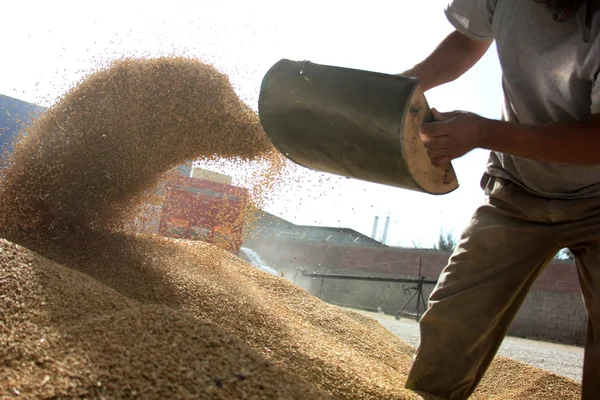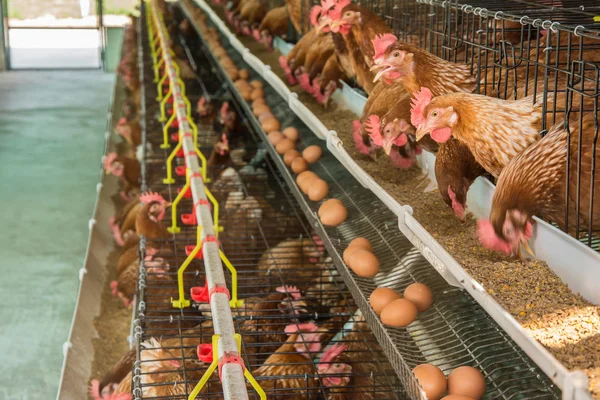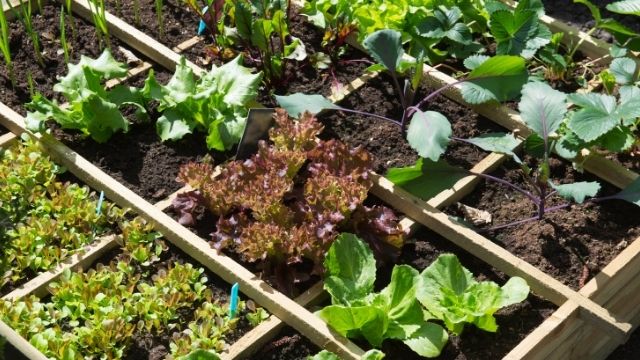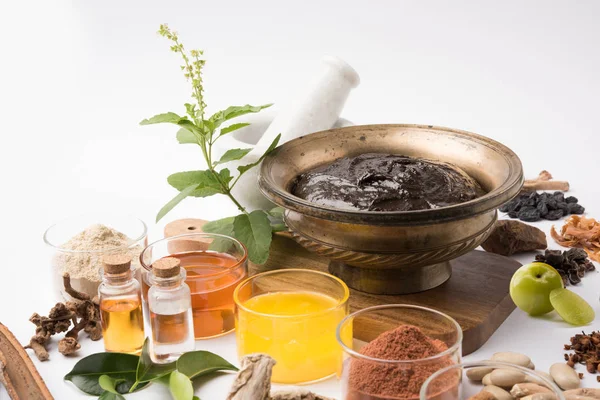Get a Step-by-Step Guide to Cut Costs and Boost Your Poultry’s Health using locally available ingredients to make homemade quality chicken feed for your chicks, layers, and broilers.
One of the most significant challenges poultry farmers face is the high cost of commercial chicken feed. In fact, feed can account for up to 70% of the total cost in poultry farming. But did you know you can slash these expenses by creating your own homemade feed using locally available ingredients? Homemade chicken feed formulas save money and allow you to control the nutritional value of what you give to your chickens.
Whether you’re raising layers, broilers, or free-range chickens, this guide will help you formulate homemade chicken feed tailored to your flock’s needs while keeping your costs low.
Why Consider Homemade Chicken Feed?
Commercial feeds are convenient, but they’re often expensive and sometimes loaded with unnecessary fillers. By making your own chicken feed at home, you can:
- Save money: Use local ingredients that cost less.
- Customize nutrition: Tailor the feed formula to meet the specific dietary needs of your chickens.
- Avoid additives: Control what goes into your chickens’ diet and avoid unwanted chemicals.
In this blog, we’ll walk you through easy-to-follow chicken feed formulas for layers and broilers at various growth stages. We’ll also address frequently asked questions and give practical tips on how to make sure your chickens get the right balance of nutrients.
Related; How to Make Homemade Dairy Feed for More Milk: A Guide
Layer Chicken Feed Formulas
In the first few weeks of life, layers chicks will require a diet high in protein to fuel their rapid growth. A well-balanced-layer chick mash should contain around 18-20% digestible crude protein (DCP). Here’s a simple formula to mix a 70kg bag of chick mash:
Layers Chick Mash (1-4 weeks)
| Ingredient | Amount (kg) |
|---|---|
| Whole maize | 31.5 |
| Wheat bran | 9.1 |
| Wheat pollard | 7.0 |
| Sunflower or linseed | 16.8 |
| Fishmeal | 1.5 |
| Lime | 1.75 |
| Salt | 0.03 |
Additives:
- 70g tryptophan
- 20g premix amino acids
- 3.0g lysine
- 10g methionine
- 70g threonine
- 50g enzymes
- 60g coccidiostat
- 50g toxin binder
Practical Tip:
When mixing your feed, always combine the smaller, micro-ingredients (such as premixes and amino acids) first before adding the larger ones. This ensures a more even distribution of nutrients throughout the feed.
As your chicks transition into pullets (young hens that will later lay eggs), they need a slightly lower protein content, around 16-18%. This feed will help them grow strong and prepare them for egg production. Here’s how to formulate a 70kg batch of growers mash:
Growers Mash (4-8 weeks)
| Ingredient | Amount (kg) |
|---|---|
| Whole maize | 10 |
| Maize germ | 17 |
| Wheat pollard | 13 |
| Wheat bran | 10 |
| Cottonseed cake | 6 |
| Sunflower cake | 5 |
| Soya meal | 3.4 |
| Lime | 2.07 |
| Bone meal | 0.7 |
| Fishmeal | 3 |
| Salt | 0.014 |
Additives:
- 1g coccidiostat
- 18g premix
- 1g zinc bacitracin
- 7g mycotoxin binder
“In my own experience raising pullets on our family farm in Meru, using homemade growers mash has saved us up to 25% on feeding costs, while keeping our birds healthier compared to when we used commercial feeds.”
Once your pullets reach 18 weeks, they transition into full egg-laying hens. Their protein requirements will drop slightly, but they’ll need more calcium to support shell production. A good layers mash contains around 16-18% protein Here’s a formula for a 70kg batch:
Layers Mash (18 weeks+)
| Ingredient | Amount (kg) |
|---|---|
| Whole maize | 34 |
| Soya | 12 |
| Fishmeal | 8 |
| Maize/rice/wheat bran | 10 |
| Lime | 6 |
Additives:
- 175g premix
- 70g lysine
- 35g methionine
- 70g threonine
- 35g tryptophan
- 50g toxin binder
Practical Tip:
Ensure your layers get enough calcium (from lime or shell grit) to produce strong eggshells. If you notice soft shells or fewer eggs, consider increasing the lime content slightly or providing supplemental calcium.
Broiler Chicken Feed Formulas
Broilers are bred for meat, and their nutritional needs are different from layers. During the first few weeks, they require a high-protein diet to support muscle growth. As they grow older, their diet should focus more on energy to promote fat accumulation.
During the first four weeks, broiler chicks need 22-24% DCP to develop their muscles and feathers properly. Here’s a 70kg formula for a high-protein broiler starter:
Broiler Starter (0-4 weeks)
| Ingredient | Amount (kg) |
|---|---|
| Whole maize | 40 |
| Fishmeal | 12 |
| Soya bean meal | 14 |
| Lime | 4 |
Additives:
- 70g premix
- 35g lysine
- 35g threonine
Practical Tip:
Make sure to store your feed in a cool, dry place. If your feed becomes damp, it may develop mold, which can be harmful to your broilers. A drum mixer can help you mix the ingredients evenly, but hand mixing is also an option if done thoroughly.
Once your broilers hit the five-week mark, their protein needs decrease slightly (18-20% DCP), and they require more energy for fat deposition. Here’s a 70kg broiler finisher formula:
Broiler Finisher (5 weeks+)
| Ingredient | Amount (kg) |
|---|---|
| Whole maize | 10 |
| Maize germ | 16.7 |
| Wheat pollard | 13.3 |
| Wheat bran | 10 |
| Cottonseed cake | 6 |
| Sunflower cake | 4.7 |
| Fishmeal | 3 |
| Soya meal | 3.4 |
| Lime | 2 |
| Bone meal | 0.04 |
Additives:
- 10g grower premix
- 5g salt
- 5g coccidiostat
- 5g zinc bacitracin
“I recently ran a small broiler operation in Eldoret where I used homemade feed for the entire flock. The result? A 15% reduction in feed costs and broilers that reached market weight faster compared to the previous batch fed on store-bought feed.” A farmer in Eldoret
The Top Benefits of Making Your Chicken Feed
- Cost Savings: The most obvious benefit of homemade feed is that it’s cheaper than commercial alternatives. For many farmers, this can mean the difference between profit and loss.
- Control Over Ingredients: You decide exactly what goes into your chickens’ diet. No unwanted chemicals, fillers, or low-quality ingredients.
- Flexibility: You can tweak your feed formulas to suit your specific breed of chickens, the local climate, or the availability of certain ingredients.
- Improved Nutrition: Since you’re sourcing the ingredients yourself, you can ensure higher-quality, fresher feed, leading to healthier chickens.
Challenges of Mixing Homemade Chicken Feed
while making your own chicken feed has many advantages, there are some potential downsides to consider. Here are a few challenges:
| Downside | Description | Solution |
|---|---|---|
| Nutritional Imbalance | Feed may lack essential nutrients or have an excess, leading to poor growth or health issues. | Consult poultry nutrition guides or experts; ensure feed meets the nutritional needs of chickens. |
| Inconsistent Quality | Ingredient quality may vary, leading to contamination or spoilage, which can affect chicken health. | Source high-quality ingredients; store them properly to avoid contamination or spoilage. |
| Time and Effort | Making feed requires time to gather, measure, and mix ingredients, unlike buying commercial feed. | Use a drum mixer for efficiency; make larger batches and store them properly to reduce frequent mixing. |
| Lack of Additives and Supplements | Homemade feed may lack important additives found in commercial feed, such as vitamins or coccidiostats. | Purchase and add high-quality premixes, vitamins, and supplements in the correct proportions. |
| Inconsistent Ingredient Availability | Some ingredients may be unavailable or fluctuate in price, affecting feed consistency. | Substitute ingredients with similar nutritional profiles when necessary; plan ahead for shortages. |
| Possible Disease Spread | Improperly processed or stored ingredients may harbor pathogens or toxins, leading to disease. | Check ingredient quality; store feed properly; use mycotoxin binders to protect against contamination. |
Frequently Asked Questions
Q: Can I substitute ingredients?
Yes, you can substitute some ingredients depending on availability. For example, if fishmeal is too expensive, try meat meal or groundnut cake as a protein source. Just ensure that the protein levels remain high, especially for younger chickens and broilers.
Q: How do I ensure my chickens get enough nutrients?
Watch your flock carefully for signs of malnutrition. Healthy chickens will have shiny feathers, bright eyes, and active behavior. For layers, consistent egg production and strong shells are good indicators of proper nutrition.
Q: Can I sell the feed I make?
Yes, if you make high-quality feed that meets the nutritional needs of poultry, you could potentially sell it to other farmers. However, make sure to check any local regulations or licensing requirements before doing so.
Q: How do I store homemade feed?
Store your feed in a cool, dry place to prevent mold and spoilage. A sealed container or drum works best. Also, try not to make too much feed at once – a week or two’s supply is ideal to maintain freshness.
Conclusion: Take Control of Your Chicken’s Diet and Your Bottom Line
By making your own chicken feed, you take control of both your farm’s profitability and your flock’s health. It’s a win-win situation. With a little effort and the right ingredients, you can slash feed costs, improve



